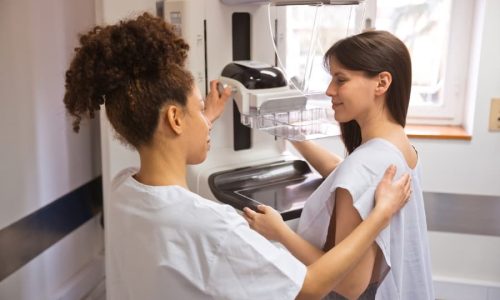What to Expect at Your First Mammogram
A patient’s first mammogram can be an anxiety- and stress-inducing event. However, you can alleviate these feelings by becoming educated and knowledgeable about the screening procedure and what it involves. Regional Cancer Care Associates provides treatment for breast cancer along with other oncology conditions and blood disorders. Here, we discuss what a mammogram is, how to prepare for the appointment, and what to expect.

What Is a Mammogram?
A mammogram is a screening test performed to detect potential signs of breast cancer. It uses X-ray technology to produce an image of the inside of the breast. Mammograms are essential to women’s health because they can identify breast cancer in its earliest stages, when the disease can be treated most effectively. In many cases, mammograms find very small cancers before they grow large enough for a woman to notice.
American Cancer Society guidelines says that women who are at average risk for breast cancer should have the option to start screening with an annual mammogram between ages 40 and 45 years, while women ages 45 to 54 should get mammograms every year. Women who are at elevated risk for developing breast cancer because of family history or other factors should talk with their healthcare provider about when to begin screening and how often to be screened.
Preparing for Your Appointment
When scheduling a mammogram, patients may want to ensure that the date for their appointment falls in the right phase of their menstrual cycle. This is because some women can experience tender or swollen breasts starting about one week before their period and through the end of the period. During mammography, the breasts are compressed on a plate or tray to enable the technician to obtain an adequate image of the breast tissue. If a woman is already experiencing pain or tenderness, mammogram testing can increase that discomfort.
In addition, patients should refrain from using products such as perfumes, deodorants, and lotions on the day of the test. These products can show up on mammogram results and may render those results inaccurate.
During the Appointment
Before the mammogram is performed, patients are asked to remove their shirts, as well as their bras or any other undergarments from the waist up. Next, they put on a hospital gown. The gown must open in the front to allow full access for testing.
When patients enter the exam room, they stand directly in front of the mammogram machine. Then, one breast is placed on a plate that sits on the machine. To keep the breast steady during testing, an upper plate is brought down to flatten and squish the breast between the two plates. This process is repeated to achieve a side image of the breast. Next, technicians take X-rays of the other breast by completing the same processes.
The mammogram testing process can be an uncomfortable one, as breasts are flattened between two plates. This can cause discomfort, pain, or other symptoms. However, mammograms can be completed in a short time. Breasts are compressed for only a few seconds, and the whole appointment typically lasts just 15 to 30 minutes.
Post-Mammogram Procedures and Information
Immediately following the appointment, patients can drive themselves home from the facility. Mammogram procedures do not require patients to be under anesthesia, so they can continue with everyday activities. Patients can expect to receive their results within a few days or weeks following their appointment.
However, if signs of potential cancer are found on the screening, patients may receive a call earlier. If a radiologist identifies potential signs of breast cancer, this does not necessarily mean the patient has the disease. Unusual signs can appear for many reasons. Additional testing and exams are required to determine the cause of a mass.
X-ray technology uses radiation to produce clear, precise pictures. Some patients worry about radiation exposure. However, advances in mammogram technology have reduced the amount of radiation needed to obtain high-quality images. This means patients do not have to worry about the risk of breast cancer from intense radiation exposure. However, patients who previously received radiation therapy should inform their doctor about this history before getting a mammogram.
Schedule Your Mammogram Today
Scheduling your first mammogram can be stressful—but it’s an important step in protecting your health. The great majority of women have normal mammograms or are found on further evaluation to not have breast cancer. However, should you be diagnosed with breast cancer, as the expert medical oncologists of Regional Cancer Care Associates are here to provide state-of-the-art therapies and comprehensive care. With 20 locations across New Jersey, Connecticut, Massachusetts, and the Washington, D.C., area, RCCA also offers convenient care close to home. To learn more about breast cancer treatment and other services we offer, contact us today or request an appointment.